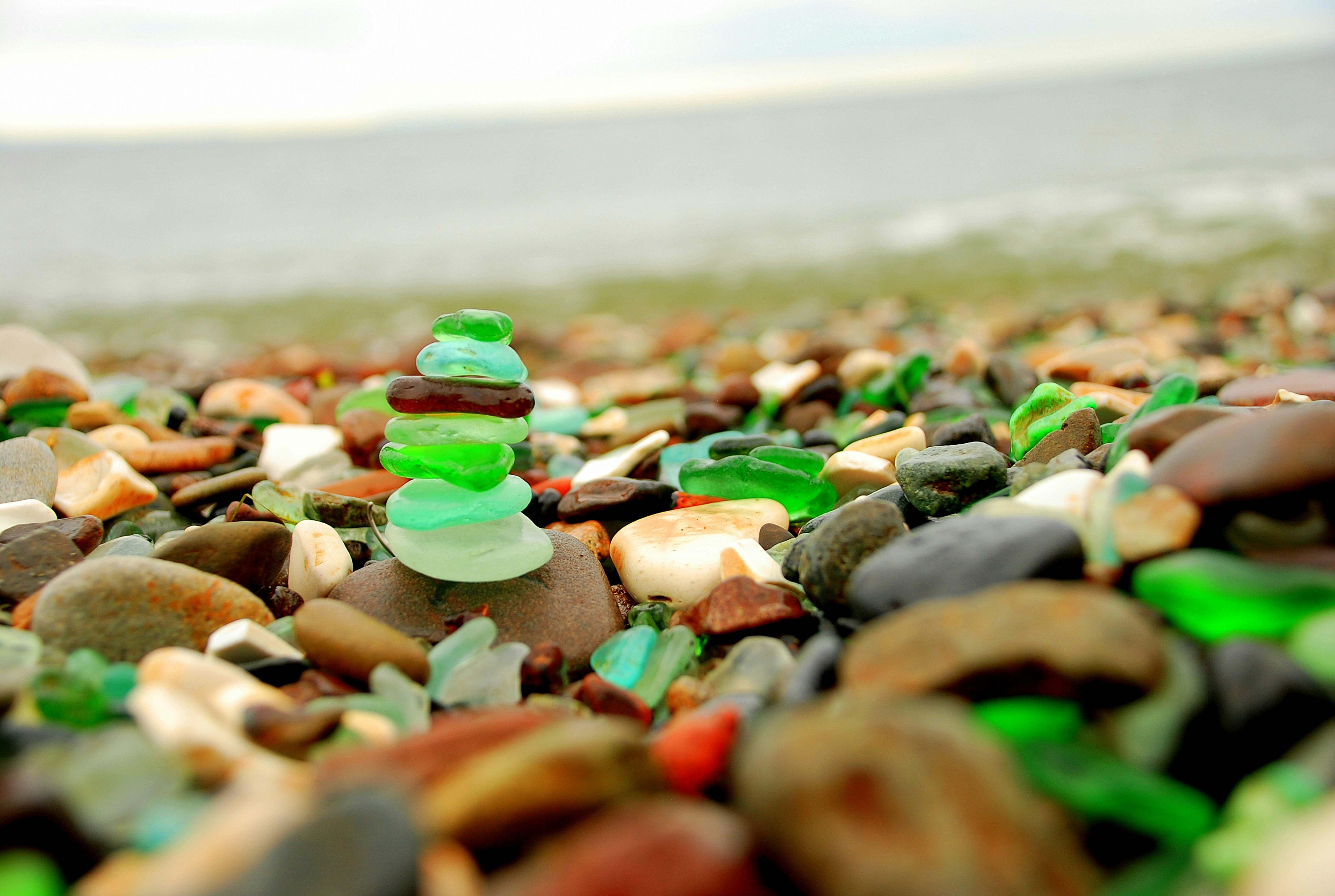The Ocean Turns Discarded Glass Into Unique Treasure — Here's How Sea Glass Is Made
Working with sea glass affords creative souls an opportunity to turn trash into artistic expression.
Updated Sept. 4 2024, 11:01 a.m. ET
There are few things in nature that embody poetic justice as much as glass discarded as trash into the ocean and then transformed into beautiful works of art. We already know there's an unfathomable amount of plastic waste in the ocean that numerous countries contribute to each year. But when it comes to sea glass, it feels like roaring waters powerfully transforming trash into treasure.
If you have ever wondered what sea glass is, how it is made, and where to find it, you're in luck. Keep reading to learn more about this unique phenomenon and how some savvy conservationists are using sea glass to spread awareness of the plight of trash in the ocean.
What is sea glass?
Don't let the "sea" in "sea glass" deceive you; according to ScienceABC, sea glass can refer to colorful, weathered glass found along all bodies of water, such as beaches, seas, and rivers. Over an extended period, the constant tumbling of the glass in powerful waves alters its physical appearance.
Because of the salt that is present in bodies of saltwater from which sea glass is deposited, the sea glass tends to have a frosted appearance to it. Believe it or not, the glass undergoes a chemical change over time. According to ScienceABC, the pH balance of sea glass differs from beach glass deposited from fresh waters, although most people use the two phrases interchangeably.
How is sea glass made?
Per the retailer Sea Glass Jewelry By Jane, sea glass starts as broken, discarded glass tossed into the ocean and tumbled by waves. These fragments eventually turn into the frosted, rounded, beautiful gem-like pieces that beachcombers seek and consumers purchase en masse.
"The fact is that it begins its journey to beauty as nothing more than ordinary glass, mostly old bottles and jars, broken dishware, and even glass windshields and tail lights from older cars," according to the sea glass jeweler.
The process through which discarded fragments become sea glass may take several decades to 100 years or more, according to Sea Glass Jewelry By Jane.
Consumers who are seeking out sea glass pieces made by retailers are sometimes concerned with the origin of the product, or more precisely, the body of water from which the sea glass originates.
Here's where you can find sea glass.
Artistic sea glass pieces include jewelry and mosaic works of art. Farmers' markets, especially those close to coastal towns and beach cities, are usually easy scores for handmade sea glass jewelry and art from mom-and-pop-style vendors.
You may have some luck at brick-and-mortar thrift shops and online fashion and thrift shops.
When shopping for sea glass jewelry and art, be sure to ask about the origin of the sea glass and assess whether the sea glass is real or has been replicated to look like sea glass. It is important to note if the vendor is certified through any bodies such as the North American Sea Glass Association (NASGA) within the International Sea Glass Association, which upholds a set of standards for retailers.


